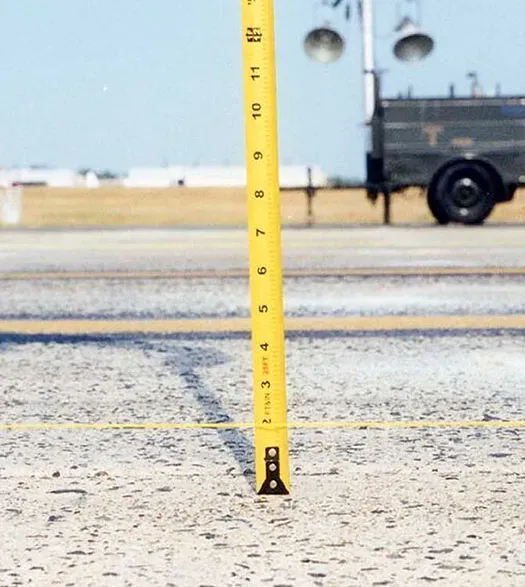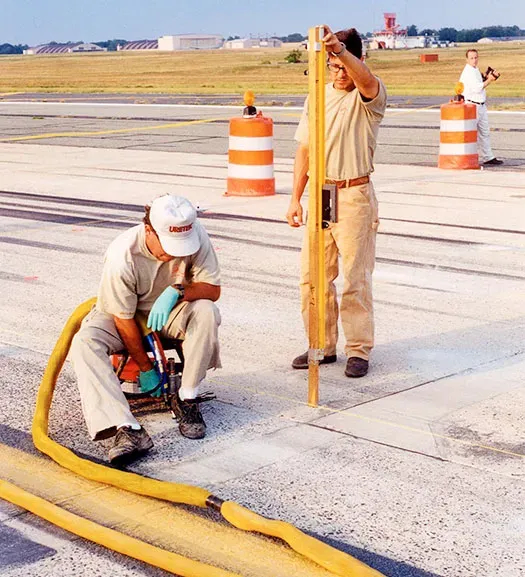Fast, Cost-Effective Repair of Air Force One Runway
Problem
Andrews Air Force Base located in Maryland is perhaps most famous for being the home of the two Boeing aircraft that serve the President of the United States as Air Force One. In 1999, a two-inch deep dip developed in the primary runway for Air Force One, runway 1L/19R. An engineering investigation revealed the settlement was caused by water infiltrating the pavement system and transporting soil particles through a leaking culvert under the runway. The settled pavement needed to be reconstructed or repaired to restore operations of this essential runway, so the U.S. Air Force called URETEK.
Analysis
Many airport repair jobs are time-sensitive, but Andrews necessitates even faster repair because of its political significance. Complicating matters, however, Andrews experiences frequent “ramp freezes” where all operations other than those pertaining to Air Force One are shut down due to security reasons. Because disruptions to runway 1L/19R have far-reaching impact, U.S. Air Force engineers ruled out full-depth reconstruction as too time-consuming. URETEK provided an alternative that minimized runway downtime, security concerns, and upheaval of the President’s schedule.
Solution
URETEK employed its patented URETEK Deep Injection® (UDI) process to repair the settled runway. The scope of the work can be summarized in five key tasks: initial slab lifting, soil stabilization, culvert repair, final slab alignment, and pavement joint and crack sealing.
Result
Within the 60-foot by 88-foot work area, URETEK successfully realigned 15 slabs, stabilized soft soils down to 14 feet (measured from the surface), and oversaw repair of the leaking culvert and sealing of pavement joints/cracks by hand-picked subcontractors. URETEK saved the U.S. Air Force about $125,000 and 20 days of runway closure time. This represents a 60 percent reduction in work time and a 50 percent reduction in repair costs as compared to the initial proposal of reconstruction. Additionally, the U.S. Air Force and their consultants performed evaluations of the repair in 2000, 2004, 2006, and 2007 and determined it was performing well. In December 2010, a sample was excavated during a runway keel replacement project and was found to still be intact after 11+ years of service.
URETEK Deep Injection® (UDI)
Widely referenced throughout our industry, UDI involves the injection of structural polymer into base and subgrade soils to increase the load bearing capacity. This is achieved by injecting the polymer through small holes drilled directly through the pavement structure to depths determined by site-specific analysis. Our URETEK 486 Star® material flows easily into voids and weak zones within the soil mass below. Through a controlled chemical reaction, the expanding polymer compacts surrounding soils and applies a controlled pressure on targeted areas of the affected pavement above. If needed, a multi-injection design plan is utilized to gently return the pavement to its original grade. The composite material quickly cures into a strong, dimensionally stable, and water-resistant geo-material, providing years of reliable service.
URETEK 486 Star®
URETEK 486 Star® polymer is a two-component, high-density, expanding thermoset polyurethane system. It was developed to be the ideal solution for under-sealing, void filling, lifting of settled pavement, stabilization and stiffening of weak soils, and for encapsulating and sealing buried infrastructure. URETEK 486 Star® is environmentally inert, non-toxic, and resists underground water erosion or weakening due to its industry-leading hydrophobic properties.


